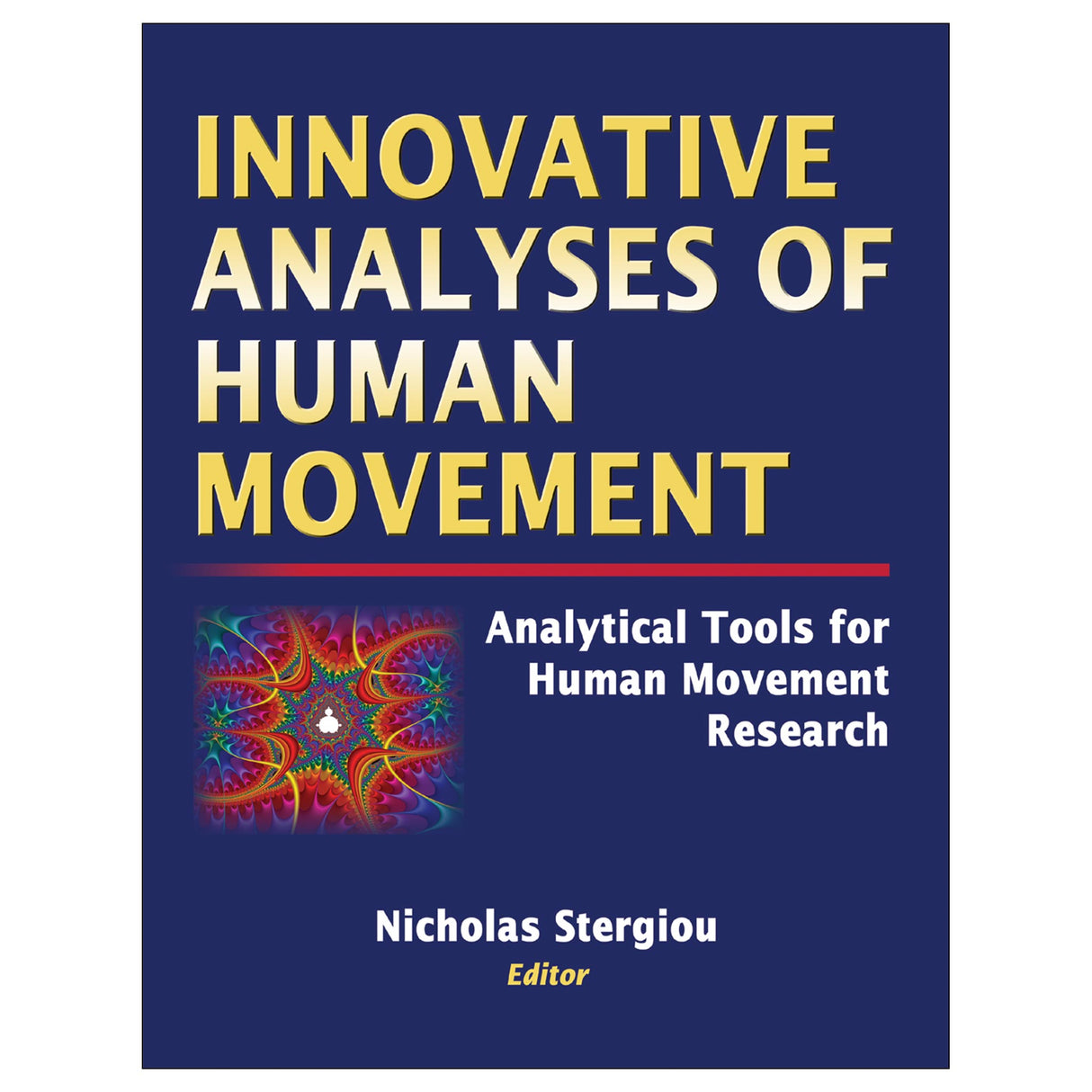Innovative Analyses of Human Movement
Author: Nicholas Stergiou
$69.00 CAD
This essential text will bring you up to date on the latest and most appropriate mathematical and statistical procedures for analyzing small and large biomechanical data sets. You'll learn how to use the newest and most innovative techniques in your own research, and you'll understand how these methods apply to data analysis. If you're a student or professional who deals with measurement issues in human movements, this resource is invaluable.
Innovative Analyses of Human Movement is conveniently divided into three parts: the mathematics and statistics applied to variability in human movements, dynamical systems methods and directional circular statistics as applied to coordination in human movements, and the analysis of complex data sets. Each of the nine chapters is well organized and provides sample data sets and examples of how to use and apply the techniques. Contributors from all over the world provide knowledge about human movement.
The text includes complete, step-by-step examples that illustrate how each technique applies to data analysis. It also presents techniques using a tutorial approach to prepare readers for real-life research studies. Many other features make this an easy-to-use tool for human movement scientists:
-Key terms are highlighted in the text and defined in a glossary for quick understanding.
-Work problems allow you to test your skills in using and solving the described technique.
-Suggested readings and resources listed for each chapter point you to additional background information.
-Web sites point readers to relevant software and information.
In addition, the book uses a case study approach that will help readers quickly associate the method of interest with the appropriate application. If you're a student or professional who deals with measurement issues in human movement, this resource is a must.
Audience
A resource for biomechanists, motor behavior and control specialists, rehab medicine researchers, biomedical researchers, sports medicine researchers, and ergonomists; a textbook for undergraduate and graduate biomechanics and motor behavior and motor control students.
Part I. Methods to Examine Variability in Human Movement
Chapter 1. Single-Subject Analysis
-Expanding Experimental Design Horizons
-Human Movement Characteristics
-Issues Relative to Data Analysis and Evaluation
-Experimental Design
-Summary
-Suggested Readings
-References
Chapter 2. Considerations of Movement Variability in Biomechanics Research
-The Nature of Intra-Individual Movement Variability
-Variability and Biological Health
-Methodological Considerations of Movement Variability
-Traditional Methods for Quantifying Variability
-Summary
-Work Problems
-Suggested Readings
-References
Chapter 3. Nonlinear Tools in Human Movement
-Time Series
-State Space
-Lyapunov Exponent
-Surrogation
-Correlation Dimension
-Approximate Entropy
-Other Tools
-Other Available Software and Algorithms
-Summary
-Suggested Readings
-References
Part II. Methods to Examine Coordination and Stability in Human Movement
Chapter 4. Applied Dynamic Systems Theory for the Analysis of Movement
-Phase Portraits and Phase Angles
-Relative Phase
-Point Estimate Relative Phase
-Discrete Relative Phase
-Complete Examples for the Application of Dynamical Systems Theory Tools
-Summary
-Work Problems
-Suggested Readings
-References
Chapter 5. Directional Statistics
-Why Are Directional Statistics Needed?
-Examples of Directional Statistics
-Representation of Circular and Axial Data
-Descriptive Statistics
-Second-Order Analysis
-Tests of Uniformity
-One-Sample Comparisons
-Comparisons of Two or More Samples
-Hypothesis Testing for Second-Order Analysis
-Paired-Sample Tests
-Correlations
-Summary
-Work Problems
-List of Symbols
-Suggested Readings
-References
Chapter 6. Mathematical Measures of Coordination and Variability in Gait Patterns
-Response Surface Methodology
-Variability
-Summary
-Work Problems
-Suggested Readings
-References
Part III. Advanced Methods for Data Analysis in Human Movement
Chapter 7. Time Series Analysis: The Cross-Correlation Function
-Time Series Analyses
-Defining the Cross-Correlation Function
-Pearson Product-Moment Correlations
-Fisher Z-Transformations
-Other Measures of Similarity
-Correlograms
-Autocorrelograms
-Cross-Correlation as a Method for Estimating Spectral Content
-Matched Filters
-Summary
-Work Problems
-Suggested Readings
-References
Chapter 8. Principles and Applications of Bootstrapping Statistical
-Analysis
-Bootstrapping
-Bootstrap Samples and Bootstrap Sampling Distributions
-How Bootstrapping Works
-Practical Issues of Bootstrapping Applications
-Advantages and Limitations of Bootstrapping
-Summary
-Suggested Readings
-References
Chapter 9. Power Spectrum Analysis and Filtering
-Time and Frequency Domain Representations: A Simple Signal
-Frequency Domain Transform and the Discrete Fourier Transform
-Data Sampling
-Biomechanical Data Filtering
-The Differentiation Process
-Joint Time-Frequency Domain Representations
-The Wigner Function
-Summary
-Work Problems
-Suggested Readings
-References
Appendix A. Answers to Work Problems
Appendix B. Data Sets for Chapter 2
Appendix C. Data Sets for Chapter 4 Work Problems
Glossary
Index
About the Editor





